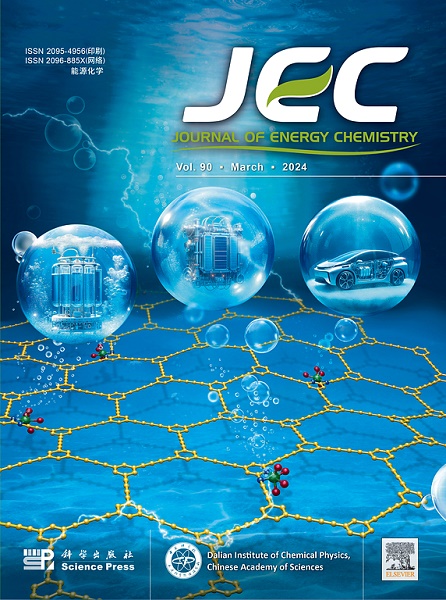Graph-guided fault detection for multi-type lithium-ion batteries in realistic electric vehicles optimized by ensemble learning
IF 13.1
1区 化学
Q1 Energy
引用次数: 0
Abstract
Accurately evaluating the safety status of lithium-ion battery systems in electric vehicles is imperative due to the challenges in effectively predicting potential battery failure risks under stochastic profiles. Complex battery fault mechanisms and limited poor-quality data collection impede fault detection for battery systems under real-world conditions. This paper proposes a novel graph-guided fault detection method designed to recognize concealed anomalies in realistic data. Graphs guided by physical relationships are constructed for learning the dynamic evolution of physical quantities under normal conditions and their potential change characteristics in fault scenarios. An ensemble Graph Sample and Aggregate Network model are developed to tackle sample distribution imbalances and non-uniformity battery system specifications across vehicles. Failure risk probabilities for diverse battery charging and discharging segments are derived. An ablation study verifies the necessity of ensemble learning in addressing imbalanced datasets. Analysis of 102,095 segments across 86 vehicles with different battery material systems, battery capacities, and numbers of cells and temperature sensors confirms the robustness and generalization of the proposed method, yielding a recall of 98.37%. By introducing the graph, spatio-temporal global fault characteristics of battery systems are automatically extracted. The coupling relationship and evolution of physical quantities under both normal and faulty states are established, effectively uncovering fault information hidden in collected battery data without observable anomalies. The safety state of battery systems is reflected in terms of failure risk probability, providing reliable data support for battery system maintenance.

基于集成学习优化的现实电动汽车多型号锂离子电池故障图导检测
准确评估电动汽车锂离子电池系统的安全状态是势在必行的,因为在随机情况下有效预测潜在的电池故障风险是一项挑战。复杂的电池故障机制和有限的低质量数据收集阻碍了现实条件下电池系统的故障检测。本文提出了一种新的图导故障检测方法,用于识别真实数据中的隐藏异常。构造物理关系导向图,学习正常情况下物理量的动态演化及其在故障场景下的潜在变化特征。提出了一种集成图样本和聚合网络模型来解决样本分布不平衡和不同车辆电池系统规格不均匀的问题。推导了不同电池充放电段的失效风险概率。一项研究验证了集成学习在处理不平衡数据集方面的必要性。对86辆不同电池材料系统、电池容量、电池单元数量和温度传感器的102,095个细分市场的分析,证实了所提出方法的稳健性和泛化性,召回率为98.37%。通过引入图,自动提取电池系统的时空全局故障特征。建立了正常状态和故障状态下物理量的耦合关系和演化规律,有效地发现了隐藏在采集电池数据中的故障信息,而没有观察到异常。电池系统的安全状态以故障风险概率的形式反映出来,为电池系统维护提供可靠的数据支持。
本文章由计算机程序翻译,如有差异,请以英文原文为准。
求助全文
约1分钟内获得全文
求助全文
来源期刊

Journal of Energy Chemistry
CHEMISTRY, APPLIED-CHEMISTRY, PHYSICAL
CiteScore
19.10
自引率
8.40%
发文量
3631
审稿时长
15 days
期刊介绍:
The Journal of Energy Chemistry, the official publication of Science Press and the Dalian Institute of Chemical Physics, Chinese Academy of Sciences, serves as a platform for reporting creative research and innovative applications in energy chemistry. It mainly reports on creative researches and innovative applications of chemical conversions of fossil energy, carbon dioxide, electrochemical energy and hydrogen energy, as well as the conversions of biomass and solar energy related with chemical issues to promote academic exchanges in the field of energy chemistry and to accelerate the exploration, research and development of energy science and technologies.
This journal focuses on original research papers covering various topics within energy chemistry worldwide, including:
Optimized utilization of fossil energy
Hydrogen energy
Conversion and storage of electrochemical energy
Capture, storage, and chemical conversion of carbon dioxide
Materials and nanotechnologies for energy conversion and storage
Chemistry in biomass conversion
Chemistry in the utilization of solar energy
 求助内容:
求助内容: 应助结果提醒方式:
应助结果提醒方式:


